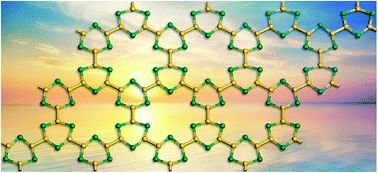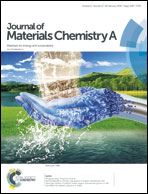Porous silaphosphorene, silaarsenene and silaantimonene: a sweet marriage of Si and P/As/Sb†
Abstract
Inspired by the recent experimental realization of pnictogen–silicon analogues of benzene and great interest in silicene, phosphorene and their heavier counterparts, herein we designed three planar porous 2D nanomaterials, namely porous silaphosphorene (pSiP), silaarsenene (pSiAs) and silaantimonene (pSiSb), and systematically investigated their stability, and electronic and optical properties, as well as their potential as photocatalysts for water splitting. Porous silaphosphorene, silaarsenene and silaantimonene monolayers are all thermodynamically, dynamically and thermally stable, and the aromaticity in each six-membered Si3P3/Si3As3/Si3Sb3 ring plays an important role in their enhanced stability. They are all semiconductors with direct band gaps of 1.93, 1.57 and 0.95 eV (HSE06) and have comparable carrier mobility to MoS2. Their good stability and exceptional electronic and optical properties make them promising candidates for applications in solar cells and other optoelectronics fields. Moreover, the suitable band edge alignments of pSiP and pSiAs monolayers endow them with potential applications as photocatalysts for water splitting.



 Please wait while we load your content...
Please wait while we load your content...